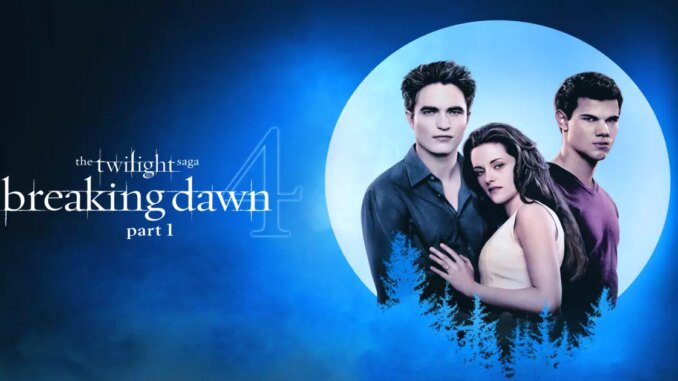
The Undying Glow: Why The Twilight Saga Still Casts a Spell After 15 Years
Fifteen years. A blink in the vast expanse of time, yet an eon in the fleeting landscape of pop culture. Yet, for a devoted legion, the pale, shimmering world of Forks, Washington, and the intertwined destinies of a human girl, a vampire, and a werewolf, remains as vivid and compelling as the day Bella Swan first laid eyes on Edward Cullen. The Twilight Saga, once a polarizing cultural meteor, has settled into a comfortable, enduring orbit, a testament to a legacy far deeper than its initial controversies suggested. Fans, spanning generations now, still can’t let go, drawn back by a potent brew of escapist romance, relatable angst, and a uniquely constructed mythology that continues to whisper of first loves and impossible choices.
At its icy, sparkling core, Twilight offered an epic, all-consuming romance that resonated with the yearning heart of adolescence and beyond. Bella Swan, the unassuming, slightly clumsy human anchor, became an unlikely mirror for millions. Her self-doubt, her feeling of being an outsider, suddenly vanished under the unwavering, intense gaze of Edward Cullen. This wasn’t just a crush; it was a soul-deep connection, a “lion and lamb” dynamic where danger intertwined with desire. The appeal wasn’t merely the idea of being loved, but of being seen, understood, and cherished to the point of obsession by someone extraordinary. Every whispered word, every hesitant touch, every moment of yearning in their forbidden dance became a blueprint for an idealized love – one that transcended logic, defied species, and promised eternity. For many, it was the first time they encountered such a passionate, high-stakes love story, etching it onto their emotional landscape as the gold standard of romantic intensity.
Beyond the magnetic pull of Edward, Twilight masterfully crafted a unique and immersive world that felt both fantastical and intimately real. Stephenie Meyer didn’t just borrow from existing vampire and werewolf lore; she reimagined it, imbuing her creatures with distinct, often contradictory, characteristics. Vampires sparkled in the sun, weren’t harmed by crosses, and could be “vegetarians.” Werewolves weren’t just men who turned into wolves; they were a distinct Quileute tribe, genetically predisposed to protect their lands, and bound by the inexplicable phenomenon of “imprinting.” This fresh take, though sometimes mocked, created an internal logic and a fully realized universe that readers could lose themselves in. The misty, evergreen landscape of Forks became as much a character as any human or supernatural being, a stage perfectly set for ancient feuds, whispered secrets, and the slow, inevitable creep of destiny. It was a world ripe for escape, a place where the mundane could suddenly collide with the magical, offering a delicious alternative to everyday reality.
Moreover, the relatability of its core emotional conflicts proved surprisingly enduring. While the supernatural elements provided the spectacle, the underlying themes were universal: the agonizing choice between two loves (Team Edward vs. Team Jacob), the struggle for identity, the desire to belong, and the terrifying yet exhilarating process of growing up and making irreversible decisions. Bella’s journey from a self-effacing teenager to a powerful, confident woman, making sacrifices for her family and her chosen path, mirrored the internal metamorphoses many readers experienced in their own lives. Her often-criticized “plainness” actually became her strength, allowing millions to project themselves into her shoes, imagining what it would be like to be the center of such an extraordinary universe, to be fought over, to be protected, to ultimately choose one’s own destiny, even if that destiny involved becoming a creature of the night.
Finally, the power of community and nostalgia has cemented Twilight’s legacy. The saga emerged at a pivotal moment for online fandom, fostering vibrant forums, epic fanfiction, and fervent debates. Midnight book releases and movie premieres became communal rituals, forging bonds among strangers united by their shared obsession. For an entire generation, Twilight became a cultural touchstone marking their adolescence or young adulthood. Returning to the books or films after 15 years isn’t just re-experiencing a story; it’s revisiting a part of oneself, a time of first loves, heightened emotions, and formative experiences. The recent resurgence of interest, fueled by new books like Midnight Sun and the comforting embrace of nostalgia, proves that Twilight is more than a fleeting trend. It’s a warm blanket of familiarity, a shared memory, and a reminder of a time when the world, much like Bella’s, felt full of infinite, dangerous, and dazzling possibilities.
The Twilight Saga, with its glittering vampires and passionate werewolves, continues to glow brightly not because it was perfect, but because it dared to be intensely, unapologetically emotional. It tapped into fundamental human desires for love, belonging, and adventure, wrapping them in a uniquely stylized fantasy. After 15 years, fans still can’t let go because the heart wants what it wants, and for many, a piece of their heart still beats fiercely in the misty woods of Forks, forever entangled in the undying glow of Bella, Edward, and Jacob.
